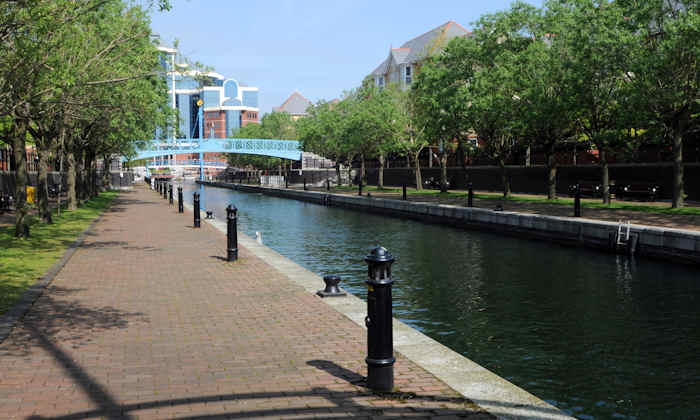Cleaning the Manchester Ship Canal
12 Sep 2016
How University research rejuvenated our legendary inland port

When the Manchester Ship Canal opened in 1894, it was one of the busiest waterways in Europe.
It had taken six years to build and cost £15 million – the equivalent to £1.65 billion today – and was the largest river navigation canal in the world, enabling the newly created Port of Manchester to become Britain's third busiest port despite the city being about 64 km inland.
In late 1898 the Manchester City, at 7,698 gross tons, became the largest vessel to reach the terminal docks. Carrying cattle and general cargo, it was met by the Lord Mayor of Manchester and a large welcoming crowd. The amount of freight carried by the canal peaked in 1958 at 18 million long tons (20 million short tons).
However, this thriving economy also meant the waterways soon became polluted by industrial discharges, sewage overflows, and surface water runoff, including from the River Irwell which forms the headwaters of the Ship Canal.
Salmon disappeared from the River Irwell in the 1850s and rowing races were abandoned in the 1970s. Despite the real estate value of the docks being estimated at £550 million, development was prevented by unpleasant odours, bubbling gas and sediment rafts.
But no more. The Salford waterways now present a very different picture – thanks to University research.
Dr Keith White and his team have established the cause and extent of water pollution in the upper Ship Canal and Salford Quays. This has led to evidence-based restoration programmes that have rejuvenated the waterway and surrounding areas.
The improvement in water quality was the essential first step in the development of Salford Quays, a development which has seen approximately 2,000 homes being built and the arrival of 900 businesses employing over 35,000 people.
Dr White’s research has been translated into practical solutions for the clean-up of contaminated waterways. This quick and effective change has been achieved alongside the spin-out company APEM Ltd (Aquatic Pollution and Environmental Monitoring).
Founded at the University in the 1980s, APEM is now one of the largest independent aquatic science consultancies in Europe. Its continuing commercial activities relating to water quality management are underpinned by Dr White’s research.
Watch a film showcasing our research at:
